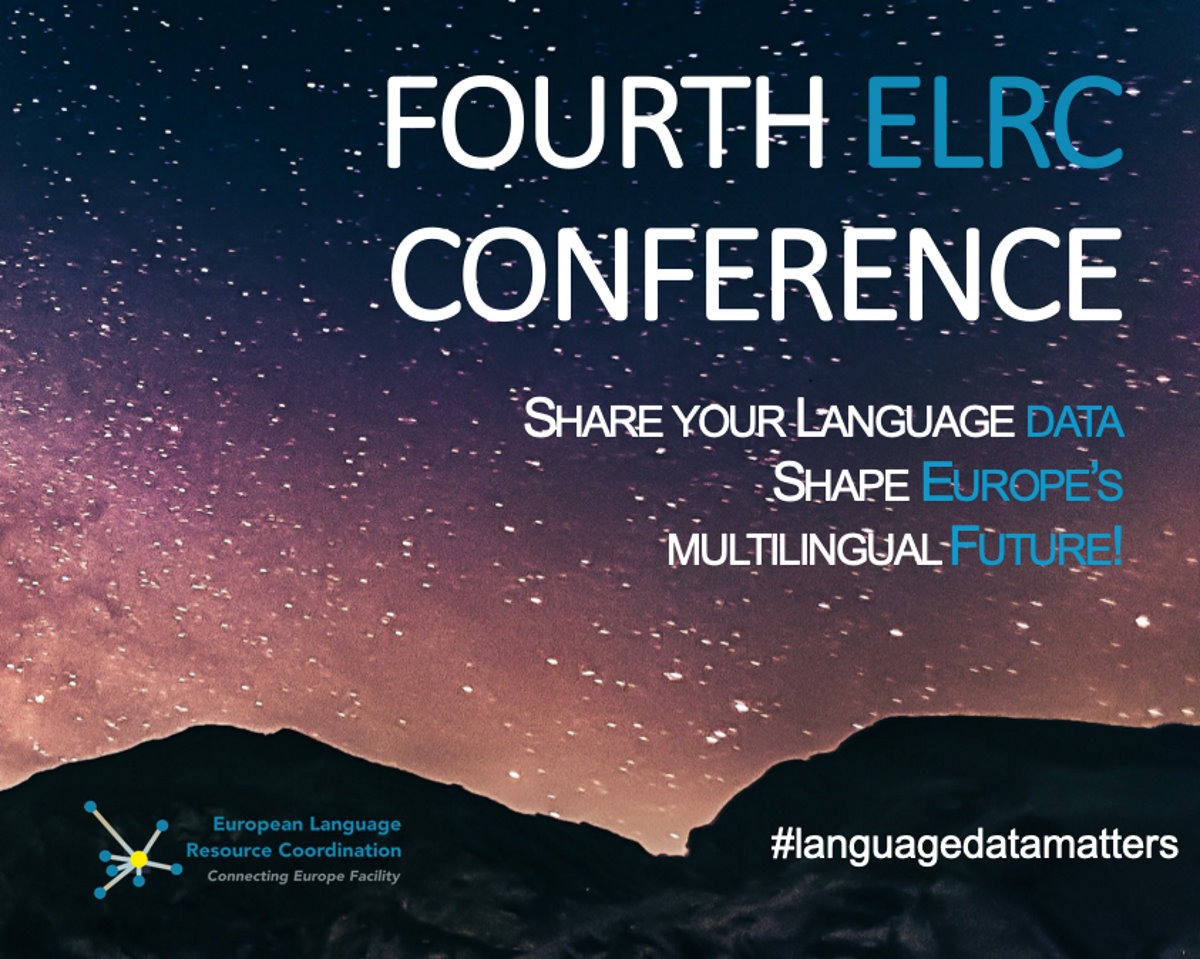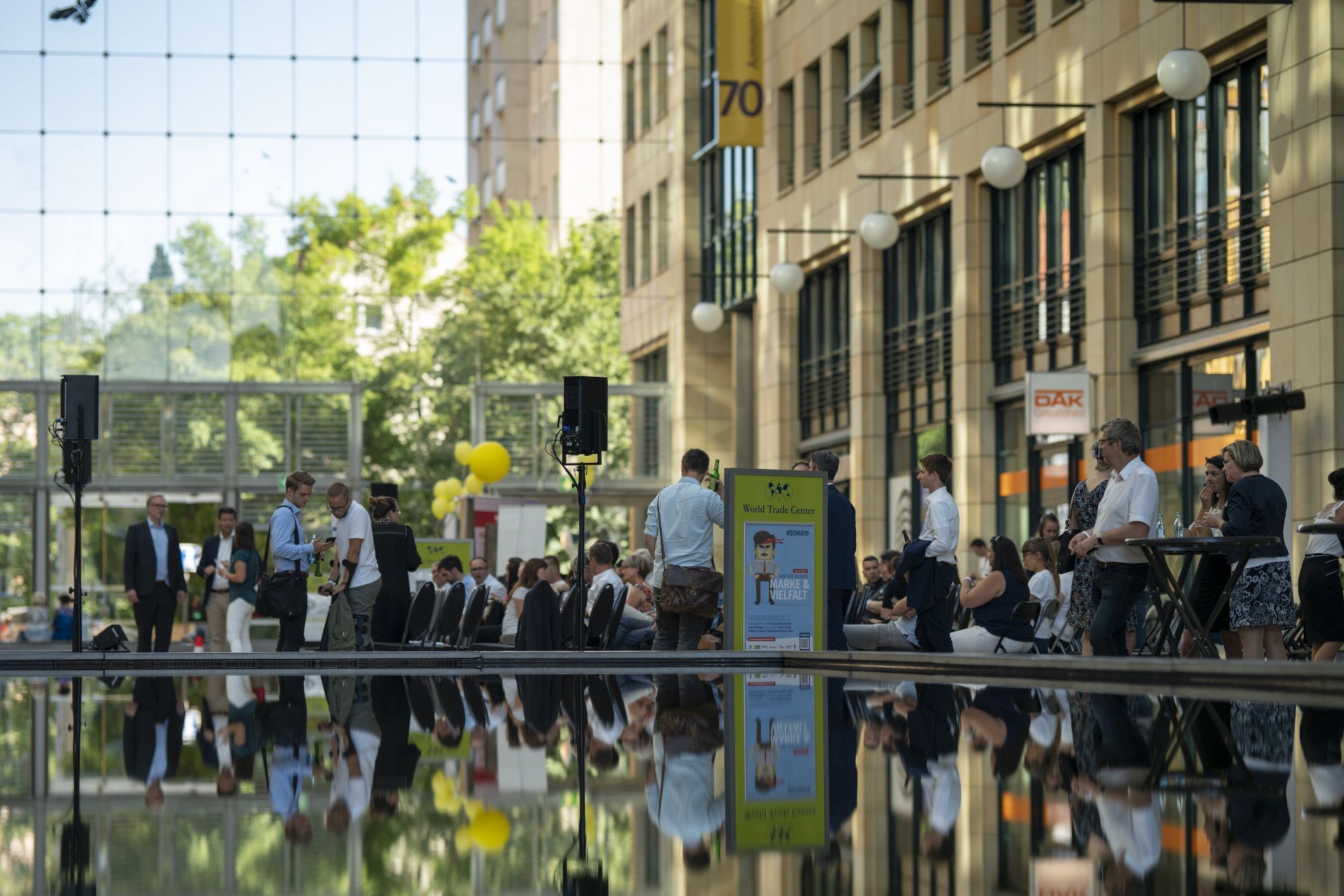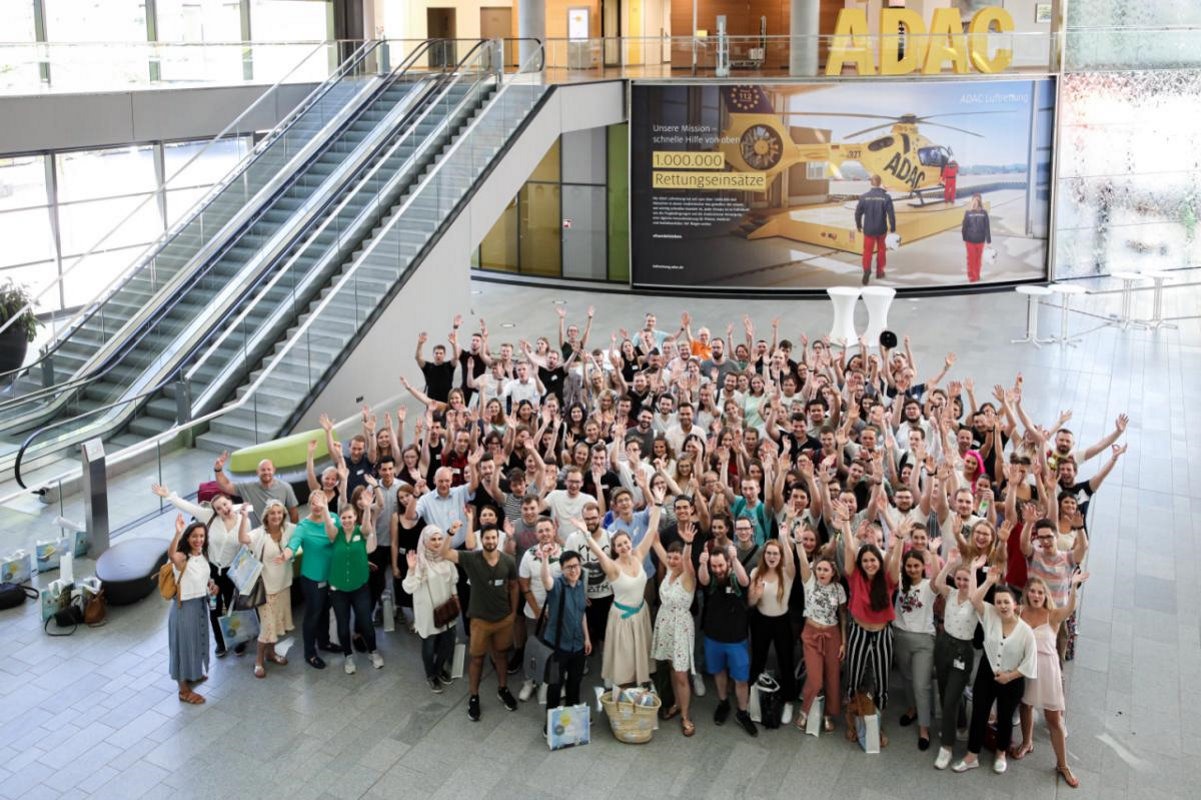Reading time: 6 minutes
Few things can change our everyday life and future as much as the use of artificial intelligence (AI). We have been feeling the first effects for several years. Whether it is a matter of saving more or more efficiently distributing time and resources, the potential that AI opens up for us is gigantic.
In Europe, the German Research Center for Artificial Intelligence (DFKI) plays a central role in the scientific advancement of AI. DFKI is, among others, coordinator of the European Language Resource Coordination (ELRC) which supports the collection of language data across Europe. And it is responsible for organizing the fourth ELRC Conference in Helsinki. Of course, DFKI are not just state of the art in research but also in conference organization. Therefore this year, they also relied on a LineUpr event app. In this interview, Eileen Schnur tells us more about ELRC, why she deliberately looked for an event app, and how she sees the future of conferences. Really worth reading. 😊
LineUpr: Hello Eileen. Thank you for taking the time to do this interview. Please introduce yourself and the ELRC.
Eileen: Hello. My name is Eileen Schnur and I am researcher at DFKI, the German Research Centre for Artificial Intelligence. DFKI is coordinator of the European Language Resource Coordination, short ELRC.
ELRC was initiated by the European Commission and focusses on the collection of language data. The collected language data is used to train eTranslation, the European Commission’s machine translation service, which aims to support cross-border communication between public services, ministries and citizens across the EU plus Norway and Iceland.
Together with our partners ELDA, ILSP, Tilde and our national experts (National Anchor Points), we want to overcome language barriers and facilitate information exchange across the EU, Iceland and Norway.
LineUpr: You used LineUpr for the ELRC Conference. Please tell us more about this event.
Eileen: The Fourth ELRC Conference took place in Helsinki on 26 and 27 November. We had participants from across the EU member states, Norway and Iceland, including representatives of the European Commission, various ministries, public administrations, research institutions and companies from e.g. the field of language technology. The Fourth ELRC Conference centred on the motto “Language Data Matters”, because we wanted to highlight the importance and the value of language data. Many people aren’t aware of that. The event also marked an important milestone for the project, because it was the first time that we presented the ELRC White Paper. It is called “Sustainable Language Data Sharing to Support Language Equality in Multilingual Europe” and reports on the results of a two-year investigation on the infrastructures for sharing language data in European public administrations and ministries. The White Paper also describes current challenges of sharing language data and provides possible solutions for a sustainable improvement of the status quo. On the second conference day, we had a country expo, where participants could get country-specific insights related to language data sharing across Europe. They could learn more about a particular country, talk about common barriers of language data sharing and potential solutions, build synergies that can help overcome existing barriers and lay the foundations for sharing language resources across Europe. They could actually visit all EU member states, Norway and Iceland in half a day.
LineUpr: Which strategies and tools do you use to address this target group? Do you attach particular importance to something special?
Eileen: First, there is the ELRC website, where all news and events are published. We shared the first information there early. We also have a Twitter account and our newsletter. Direct and personal contact with potential participants and the ELRC community is still very important to us. That’s why we sent the majority of the invitations by email.
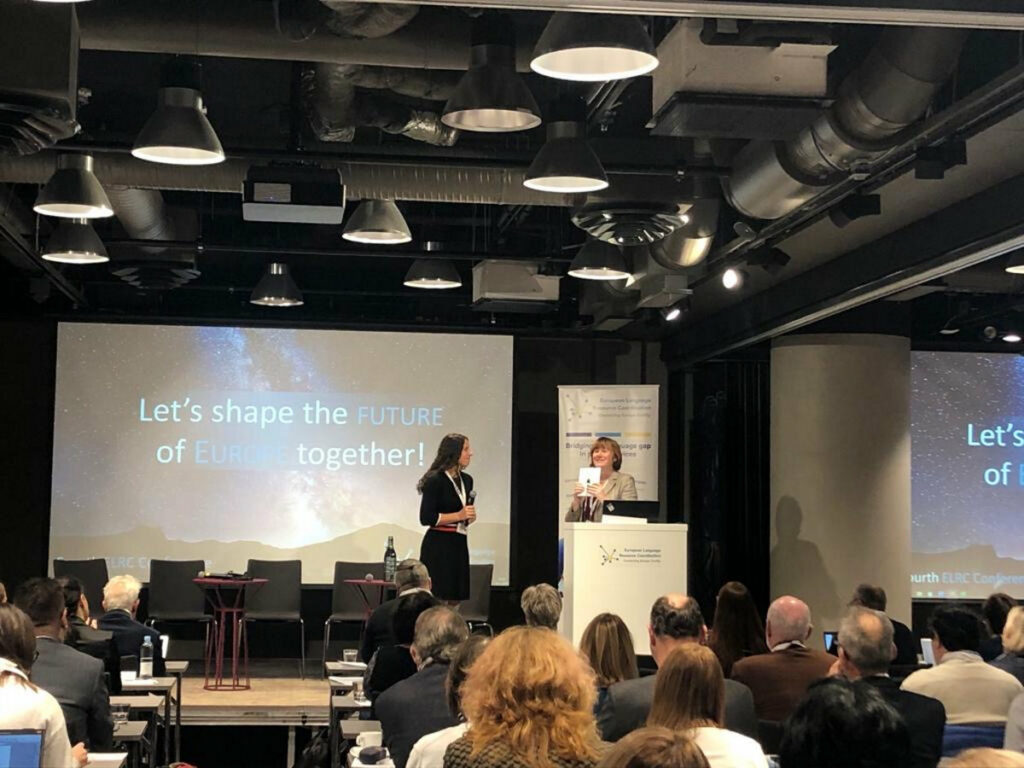
LineUpr: If you compare a printed program with an event app, what are the advantages and disadvantages of both variants?
Eileen: Of course, an event app is a more environmentally friendly alternative. At many events, participants are almost showered with paper. We wanted to avoid that. I also think that the interaction with the participants was better and the app was very informative. The participants could, for example, indicate which lectures they find particularly interesting, we were able to store relevant links and background information and also make changes at short notice so that the app was always up to date. The notification function was also very useful. Before the conference, we posted valuable information on how to get to the venue, informed the participants during the meeting when the next lecture began and thanked them after the event by push notification – that would not have been possible without the app.
However, there are still many who prefer to take notes with pen and paper. That’s where the app reaches its limits. 😉
Nevertheless, I believe that the trend towards paperless conferences is increasing. And then such an app is worth its weight in gold.
LineUpr: How long before the event did you start creating the event app? How much time do you think it took to create the app?
Eileen: In mid-September, we experimented a bit with the app for the first time. It took a few hours to add all of the content, but once the basic structure was in place, the effort for updates or additions was absolutely limited.
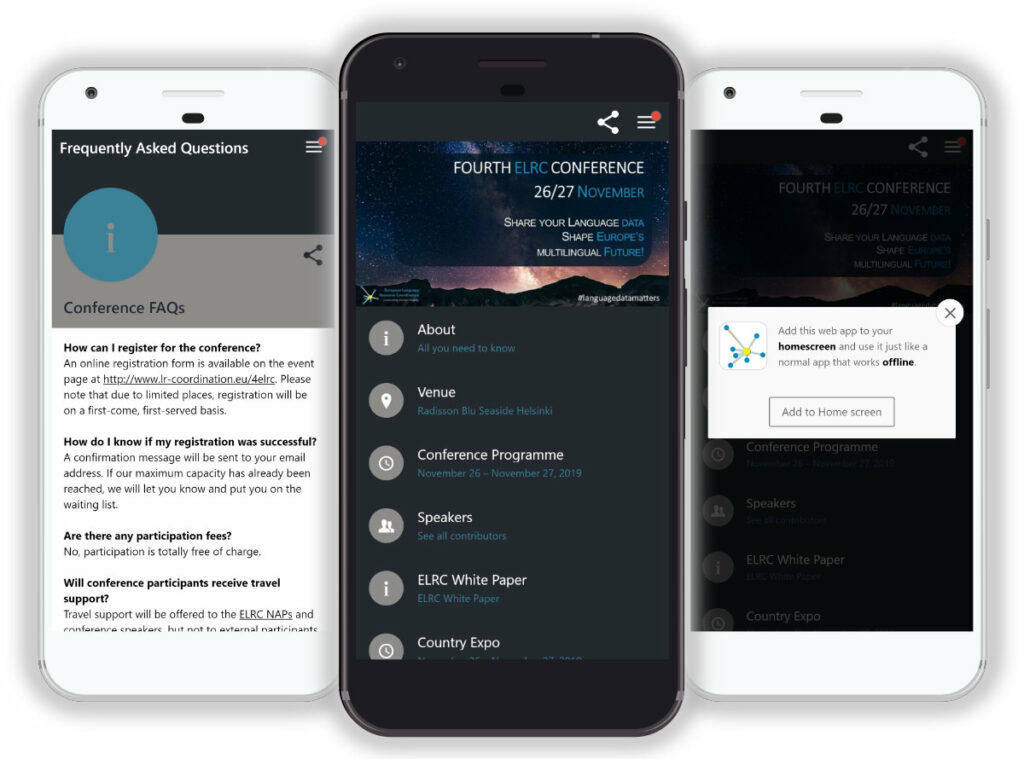
LineUpr: Did you also use the info pages?
Eileen: Yes, we even created several ones. On the one hand, there was an information page about the app itself. There was also a general information page about the project and the conference as well as a page with conference FAQs about travel, accommodation, participation fees, etc. In addition, we included various links to the registration page, the white paper, the newsletter registration, and a feedback page. Since we had an exhibition on the second day, we also created an information page with a link to the floor plan.
The number of users gave us the first indication that the implementation of the app was a success and was well received.
LineUpr: How do you rate the creation of the event app with LineUpr? What do you like and what can we improve?
Eileen: We were using an event app for the first time and wanted to test whether creating such an app was feasible for beginners and not too time-consuming. During our first test, it quickly became clear that the creation was simple and straightforward. I think it was good that we started with a free trial version and that we were able to get a first impression and didn’t have to commit ourselves directly. In the end, we were not only convinced by the user-friendliness but also by the fact that our participants did not have to download the app and were able to access it directly through their browsers.
The only thing I missed was the ability to set headings for certain agenda items. At our conference, there were various thematic blocks, such as a session called “AI and Language Technologies in the Digitalization of Public Services”. Unfortunately, it was not possible to display that this is the title of the slot and to show that the subsequent lectures are assigned to this heading. Besides that, we had no problems.

LineUpr: When and how did you inform your participants about the event app?
Eileen: When the conference program was published at the end of September, we also introduced the app for the first time. In our news article on the ELRC website, we explained that the app not only moves the agenda to the participants’ cell phones but also provides new functions that we could not offer before – this includes giving feedback online, learning more about the lectures and speakers, receiving push notifications, etc.
Our Twitter followers were also informed in a corresponding post and the link to the app was included in the standard text of the registration confirmation. The QR code was also added to the actual event website.
LineUpr: How did your visitors react to the app?
Eileen: Unfortunately, we didn’t actively ask for feedback. But it would have been a good idea and I think we will definitely do it next time. The number of users gave us the first indication that the implementation of the app was a success and overall well received. With the help of Google Analytics, we found out that the app was used regularly (and repeatedly) on both conference days. We even had more app users than participants.
LineUpr: What hurdles and difficulties did you experience when introducing an event app for your event?
Eileen: There weren’t many hurdles. The fact that the participants also received printed programmes gave them the choice of whether they would like to follow the program via the app or on paper. I think it becomes more difficult if you completely get rid of paper because for many, printed material simply belongs to a conference. Nevertheless, I believe that the trend towards paperless conferences is increasing. And then such an app is worth its weight in gold.
LineUpr: Thank you for the great interview, Eileen. You recognized the added value of an event app with razor sharpness. We firmly believe that paper will take a back seat over the next few years and digital tools will take the lead.
More information about the ELRC is available on their website. The ELRC also created a short video to explain why voice data is so important.
We are already looking forward to more events with you.
